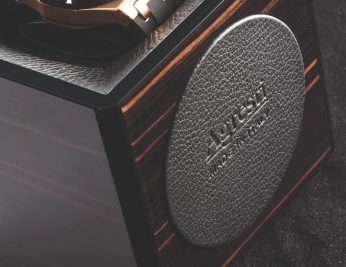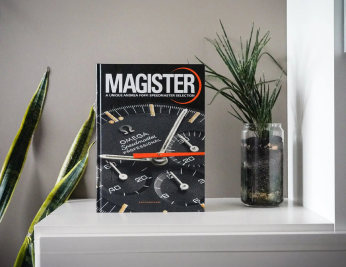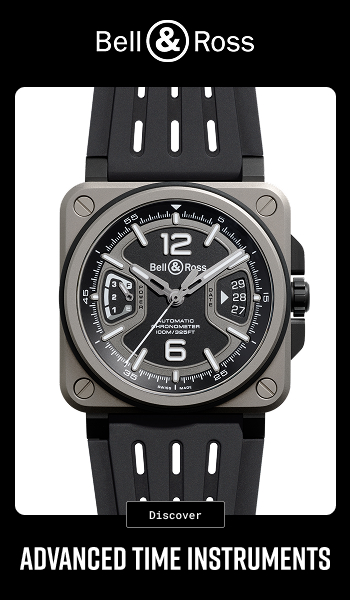Dear friends of IWS, welcome back! Today we are going to explore one of the most famous and successful watches in modern watchmaking history. We will discuss the Rolex GMT, in particular the differences between the first and second series. Indeed, it is one of the most beautiful and worn sports models ever, which, thanks to its charm and versatility, still manages to be highly appreciated today despite the fact that its design has remained almost unchanged over the years.
Rolex GMT Master I

From its inception in 1955 until 1999, when it finally ended its vigorous service, the GMT Master I contributed greatly to establishing Rolex on the world watchmaking scene, making it one of the most famous brands ever. Thanks to its striking aesthetics, because of its colored bezel, and its reliability guaranteed by the numerous patents developed by the crowned house, the GMT has been a continuous bearer of innovation and modernity, passing on Rolex’s true soul of sophistication and simplicity.
Rolex GMT Master Ref. 6542 (1955-1959)

The Rolex GMT-Master I was created to meet the needs of pilots of the American airline Pan Am, who needed a watch capable of showing two time zones. The first reference was the 6542, initially available in steel and 18k yellow gold (ref. 65428), which showed the quality of the product right away. The three-part Oyster case ensured water resistance up to 50 meters; the radium contained in the hour markers made it possible to read the time even in low-light conditions; but the surely most interesting feature, was the third arrow-tipped hand called GMT.
This innovative hand allowed the second time zone to be read directly on the dial, an innovative feature for the time, and could be adjusted only by operating the hour ball, as they were connected to the same gear train, thus also changing the local time.

One of the distinguishing features of this first series is definitely the bakelite bezel, which made the GMT one of the most loved and sought-after watches by vintage collectors, because of the ghost bezel effect (which we will also find in later references with a metal bezel) that is, the loss of color of this material with time. As the years go by, we will see that it is the bezel that will give charm to this model; in fact, based on its coloration, nicknames will be assigned by collectors to indicate the type of watch.
Inside this first reference we find caliber 1036, Rolex’s first automatic movement to indicate a second time zone thanks to the GMT hand. This hand makes one complete revolution in 24 hours, and it is possible to observe the time indicated by it through the numbers placed on the bezel, precisely from 0 to 24.
Rolex GMT Master Ref. 1675 (1959-1980)

In 1959 the earlier reference was replaced by the 1675, the model’s longest-lived reference, which over its 21 years of service brought significant and lasting changes, chief among them the introduction of a steel bezel that provided greater resistance to scratching and discoloration than bakelite.
From the point of view of materials, in addition to the classic steel and yellow gold (ref. 16758), this reference introduced for the first time the steel/yellow gold color scheme, also known as Rolesor (ref. 16753), while aesthetically we find the introduction of the winding crown protection straps, a feature that was not present in the previous reference. In addition, the lugs are made more pronounced, as is the knurling of the bezel. The 1675 is also the only sports model that is presented directly with the Jubilée bracelet, instead of the usual Oyster bracelet.

Inside we find the new caliber 1565, which would later be updated to become 1575, giving greater precision and reliability and also introducing the monochromatic black date window, (previously it was in alternating red and black).
The year 1964 was a turning point, as it became known of the radioactive effects from radium, thus leading Rolex to change the material used to make the indexes luminous. The switch was then made to a less radioactive but still dangerous element, tritium, which had to be present in quantities of less than 25 Curie, as was later reported at six o’clock by the inscription Swiss T < 25. Also on the dial we see the introduction of the inscription Superlative Chronometer Officially Certified, as a certification of the quality of the movement.
Rolex GMT Master Ref. 16750 (1980-1988)

In 1980 the reference 16750 was produced, the main novelty of which was the movement. The new GMT, in fact, was equipped with caliber 3075, which brought with it an important innovation: the quick-set date, further increasing the reliability and precision of the watch. This meant that the user could adjust the date without the need to rotate the hands, a common feature today but not in the past.Water resistance was also increased to 10 atmospheres, or about 100 meters.
Aesthetically and in terms of the materials in which it was available, no significant changes have been made over these 8 years.
Rolex GMT Master Ref. 16700 (1988-1999)
The last reference produced by Rolex for the GMT-Master I is the 16700, despite the birth in 1982 of the second series of the model, the GMT-Master II. It is important to note that although the second series brings an important innovation mechanically, as we will see shortly, this first series continued to adopt the non-independent GMT hand, in order to remain faithful to the original 1955 model and not abandon this feature that distinguished it for years.

As the only change from its predecessor, in this last reference we find the caliber 3175 and all the distinctive features of a GMT-Master I. In addition, in the last two years of production, from 1998, Luminova, a non-radioactive luminescent material that completely replaced tritium, was introduced.
Rolex GMT Master II

As mentioned earlier, in 1982 Rolex introduced the second series of the model, the GMT Master II, with the reference 16760 with a red and black bezel defined as coke, which brought quite a few innovations, particularly from a technical and materials point of view. Until 1999 the two series of the GMT-Master both remained on the market in parallel, leading to a gradual passing of the baton.
Rolex GMT Master II Ref. 16760 (1982-1988)

With this new GMT we find the most significant innovation of the model, which was the autonomous adjustment of the GMT hand. This new system made everything easier, allowing only this hand to be operated, so as not to alter the “home” time. This was made possible after a strong study by Rolex in trying to make the hands independent, implementing the functionality thanks to the Rolex caliber 3085. In this way, 3 different time zones can be obtained: the one indicated by the hour hand, the GMT hand, and, by acting on the bezel and bringing it to match the GMT hand, a third.
This first reference, made exclusively of steel, was later nicknamed‘Fat Lady‘ by enthusiasts because of the innovative movement that resulted in a significant increase in case thickness. In later years, the design was scaled down and made thinner, offering greater comfort on the wrist.
Rolex GMT Master II Ref. 16710 (1989-2007)

In 1989, the most popular and common reference of the GMT-Maser II was introduced, the 16710, which was in production for a full 18 years. The movement was updated, with the caliber 3186, whose reduced thickness made it possible to reduce the height of the watch case, favoring comfort on the wrist. In 2006, the latest versions of this reference began to employ the blue Parachrom balance spring, patented and developed by Rolex, which provided greater resistance to shocks and magnetic fields.
There was a choice of 3 color variants for the bezel at the time of purchase: pepsi (blue/red), coke (black/red) and all-black, while the case was available in steel, Rolesor (ref. 16713) or yellow gold (ref. 16718).
Rolex GMT Master Ref. 116710 (2007-2018)

Reference 116710 represents a significant turning point in the history of the GMT-Master II, thanks to the introduction of new technologies and materials. It is the first model to mount the ceramic bezel Cerachrom. In 2005, in fact, Rolex patented this alloy, which was then used for the first time on this model; characterized by strong scratch resistance and made of high-tech ceramic, it replaced the anodized aluminum used until then.
From the point of view of materials, white gold (ref. 116719BLRO) and yellow gold (ref. 116718LN) were introduced in the catalog, in addition to the colors also present on the previous reference, such as steel and Rolesor (ref. 116713LN).

Ref. 116710 also saw the light of one of the most beloved variants among enthusiasts, dubbed Batman by them (ref. 116710BLNR) because of the blue and black coloring of the bezel, first introduced in 2013.
Inside we find the same movement as the previous reference that provided 48 hours of power reserve.
Rolex GMT Master Ref. 126710 (2018-present)

The latest reference, which is still in production today, brought many updates especially from a mechanical and materials standpoint. The caliber, now 3285, has been completely revised by extending the power reserve to 70 hours. The Chronergy escapement system is also introduced, ensuring greater efficiency and precision.

A version made entirely of rose gold called Everose (ref. 126715CHNR), a special rose gold alloy patented by the brand, is added to the collection. We also find a Rolesor Everose variant (ref. 126711CHNR), which combines steel and rose gold, in which a bezel called Root Beer is inserted because of the two-tone brown-black color scheme that perfectly matches the watch’s elegant hue. In addition to these materials, the watch is also available in steel, yellow gold (ref.126718GRNR), yellow Rolesor (ref. 126713GRNR) and white gold (ref. 126719BLRO), the latter also available with a meteorite dial.

It is important to mention the introduction, in 2022, of a truly unique and somewhat strange variant of the GMT-Master II, made for a left-handed audience. This watch also introduced, for the first time, the green/black coloration of the bezel, which was greatly appreciated by the collector world.
All the nicknames of the GMT model
As I mentioned earlier in the article, based on the coloring of the bezel, enthusiasts have given certain nicknames to the watches, which have since become common to recognize the various models quickly and easily. Let’s look at them together:
- Coke: red-black bezel coloring
- Pepsi: red-blue bezel coloring
- Batman: blue-black bezel coloring
- Root Beer: brown-black bezel coloring
- Sprite: green-black bezel coloring
- Bluebarry: coloring of the bezel totally blue
- LN: coloring of the bezel totally black
- Tiger eye: brown-gold ferrule coloration
Conclusions
The Rolex GMT carries with it an idea and concept that it has perpetuated for over 70 years, clearly marking the history of modern watchmaking, varying technically and materially, but not aesthetically, thereby not losing its allure and elegance that have always distinguished it. Thanks to these characteristics, it can be said to be one of the most recognizable and well-made watches in the watchmaking scene. Which reference do you like best?
Visit our Youtube channel to experience the best of the world of watchmaking firsthand.
For all real-time updates follow us on Instagram.













